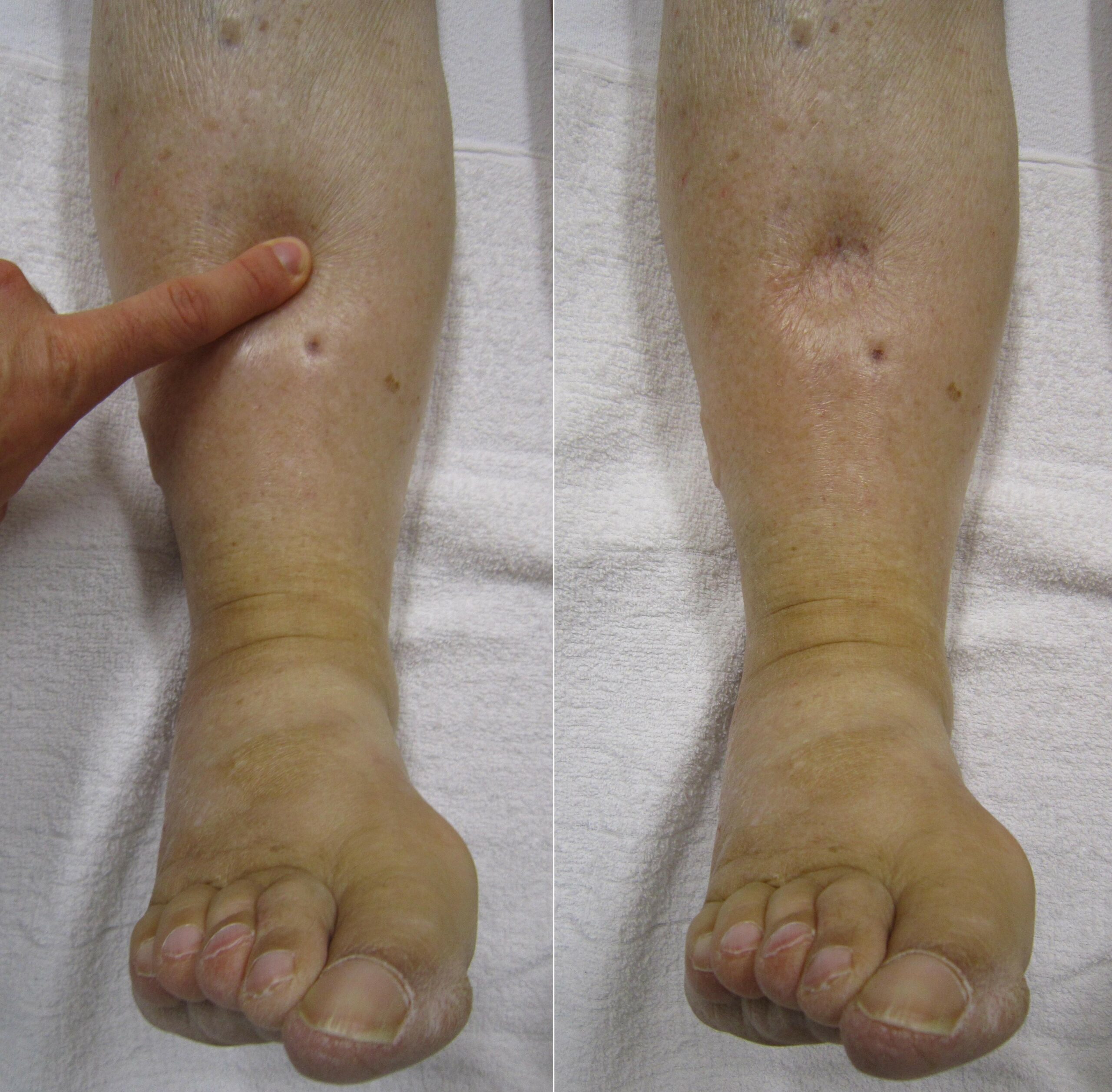Idiopathic Edema: Symptoms, Causes, Treatment
What are the symptoms of idiopathic edema?
Idiopathic edema, also known as idiopathic fluid retention, is a condition characterized by the accumulation of fluid in the body, typically in the legs, ankles, and feet. The exact cause of idiopathic edema is not well understood, which is why it is termed “idiopathic,” meaning of unknown origin. Symptoms of idiopathic edema may include:
- Swelling: The most common symptom of idiopathic edema is swelling, usually in the lower extremities such as the legs, ankles, and feet. The swelling may be more pronounced at the end of the day or after prolonged periods of standing or sitting.
- Weight Gain: Individuals with idiopathic edema may experience unexplained weight gain due to fluid retention.
- Puffiness: The affected areas may appear puffy or swollen, and the skin may feel tight or stretched.
- Indentation: Pressing on the swollen area may leave a temporary indentation (pitting edema), which is a common characteristic of fluid retention.
- Discomfort: Some individuals with idiopathic edema may experience discomfort or aching in the affected areas.
- Increased Urination: In some cases, idiopathic edema may be associated with increased urination, particularly during the night.
- Fatigue: Chronic fluid retention can lead to feelings of fatigue or tiredness.
- Breathlessness: Severe or rapidly developing fluid retention can sometimes lead to shortness of breath or difficulty breathing.
It’s important to note that the symptoms of idiopathic edema can vary from person to person and may be influenced by factors such as age, gender, and overall health. If you experience symptoms of idiopathic edema, it’s important to consult with a healthcare professional for proper evaluation and management. Identifying and addressing any underlying causes or contributing factors is key to managing idiopathic edema effectively.
What are the causes of idiopathic edema?
Idiopathic edema, also known as idiopathic fluid retention, is a condition characterized by the accumulation of excess fluid in the body, typically in the legs, ankles, and feet. The exact cause of idiopathic edema is not well understood, which is why it is termed “idiopathic,” meaning of unknown origin. However, several factors may contribute to the development of idiopathic edema, including:
- Sodium Retention: Excessive sodium (salt) intake can lead to fluid retention in some individuals, particularly those who are sensitive to sodium.
- Hormonal Changes: Fluctuations in hormone levels, particularly estrogen, progesterone, and aldosterone, can affect fluid balance in the body and may contribute to idiopathic edema.
- Venous Insufficiency: Problems with the veins in the legs, such as venous insufficiency, can lead to fluid pooling in the lower extremities and contribute to edema.
- Heart Conditions: Certain heart conditions, such as heart failure or cardiomyopathy, can lead to fluid retention and edema.
- Kidney Dysfunction: Kidney disorders that affect the kidneys’ ability to regulate fluid balance can lead to fluid retention and edema.
- Medications: Some medications, such as calcium channel blockers, nonsteroidal anti-inflammatory drugs (NSAIDs), and corticosteroids, can cause fluid retention and edema as a side effect.
- Prolonged Standing or Sitting: Prolonged periods of standing or sitting can lead to fluid pooling in the lower extremities and contribute to edema.
- Dietary Factors: Poor diet, particularly one high in sodium and processed foods, can contribute to fluid retention and edema.
- Other Factors: Other factors such as obesity, pregnancy, and certain medical conditions (e.g., liver disease, thyroid disorders) can also contribute to fluid retention and edema.
It’s important to note that the exact cause of idiopathic edema can vary from person to person, and in many cases, no specific cause can be identified. If you experience symptoms of idiopathic edema, it’s important to consult with a healthcare professional for proper evaluation and management. Identifying and addressing any underlying causes or contributing factors is key to managing idiopathic edema effectively.
What is the treatment for idiopathic edema?
The treatment for idiopathic edema, also known as idiopathic fluid retention, focuses on managing symptoms and reducing fluid retention. Since the exact cause of idiopathic edema is often unknown, treatment aims to address the underlying factors that may be contributing to fluid retention. Treatment options for idiopathic edema may include:
- Reducing Sodium Intake: Limiting the amount of sodium (salt) in the diet can help reduce fluid retention in some individuals. This includes avoiding processed foods, which are often high in sodium.
- Diuretics: In some cases, diuretic medications may be prescribed to help reduce fluid retention. However, diuretics should be used with caution and under the guidance of a healthcare professional, as they can have side effects and may not be appropriate for everyone.
- Compression Garments: Wearing compression stockings or garments can help reduce swelling in the legs and improve circulation.
- Elevating the Legs: Keeping the legs elevated when sitting or lying down can help reduce fluid accumulation in the lower extremities.
- Regular Exercise: Engaging in regular physical activity can help improve circulation and reduce fluid retention. However, it’s important to avoid activities that may worsen swelling, such as prolonged standing or sitting.
- Healthy Diet: Eating a balanced diet rich in fruits, vegetables, whole grains, and lean proteins can help support overall health and may help reduce fluid retention.
- Managing Underlying Conditions: If idiopathic edema is associated with underlying conditions such as heart or kidney problems, managing these conditions effectively can help reduce fluid retention.
- Lifestyle Modifications: Making lifestyle changes such as avoiding tight clothing, reducing alcohol consumption, and quitting smoking can help reduce fluid retention.
It’s important for individuals with idiopathic edema to work closely with a healthcare professional to develop a comprehensive treatment plan that addresses their specific symptoms and needs. Regular monitoring and management of symptoms can help improve quality of life and reduce the impact of idiopathic edema.




